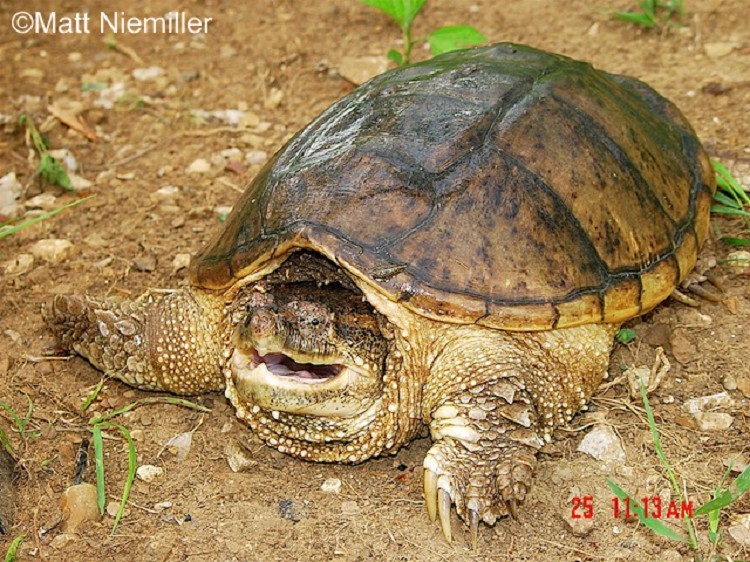Snapping Turtle, Chelydra serpentina
The Snapping Turtle occurs across the state; only one subspecies, Eastern Snapping Turtle (C. s. serpentina), recognized in TN.
Description: A large aquatic turtle (8.0 to 18.5 inches in length) with a large pointed head, rough carapace (upper shell), and long saw-tooth ridged tail. Carapace (upper shell) ranges from brown to nearly black, while the plastron (lower shell) is small and creamy to yellowish. Young Snapping Turtles have very rough shells, long tails, and light spot at edge of each marginal scute (plate).
Similar Species: Alligator Snapping Turtle has longer snout with hooked beak, extra marginal scutes, and more conspicuous ridges on the shell.
Habitat: Typically found in any bodies of water including lakes, rivers, streams, wetlands, ponds, and vernal pools; but can be found on land as well. Snapping Turtles prefer muddy waters, or water with aquatic vegetation, for concealment purposes. Although not a habitat they use but for moving from one place to another, they are often seen crossing roads where they are frequently run over by cars.
Diet: Omnivorous; includes aquatic insects, crayfish, fish, frogs, snakes, birds, mammals, carrion, and vegetation.
Breeding information: Adults breed in water during spring and summer. Females will travel over land to select and dig out a 4-7 inch deep nest in loose soil where she will lay between 20 and 50 round, leathery-shelled eggs. The eggs will hatch after 55-125 days, depending on the nest temperature and humidity. Females do not provide any care for their young.
Status in Tennessee: Common across the state, but poorly documented in Cumberland Plateau area.
Fun Facts:
- Often shell is covered with mud or algae.
- Name comes from their defensive quick and powerful snaps. While it is true Snapping Turtles have very powerful jaws which can cause injury, it is a myth that they will only let go after it thunders.
Best places to see in Tennessee: Any large or small body of water, preferably muddy or with vegetation.
